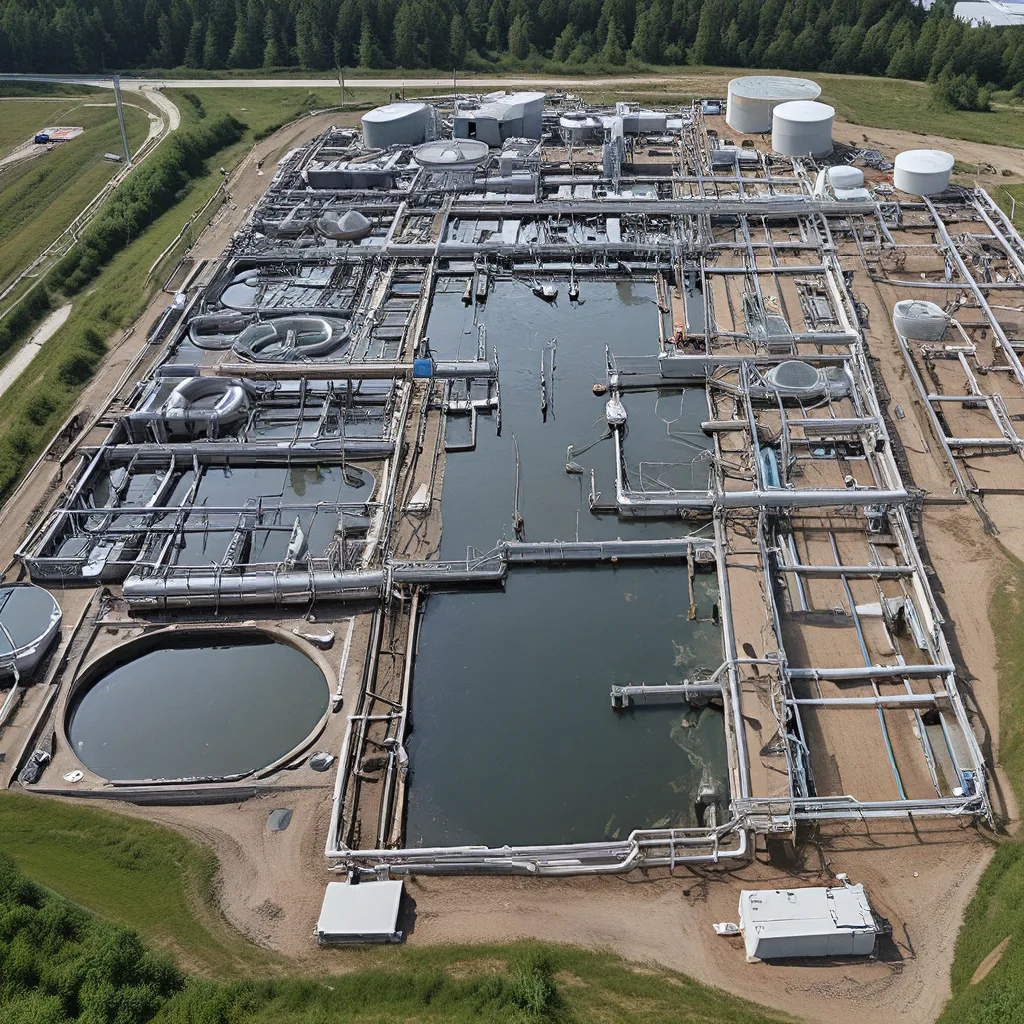
As a wastewater treatment enthusiast, I’ve long been fascinated by the incredible potential of membrane bioreactor (MBR) technologies. These advanced systems are poised to revolutionize the way we approach water reclamation and reuse, and I’m excited to dive into the latest advancements and trends in this rapidly evolving field.
The Rise of Membrane Bioreactors
The MBR concept has been around since the late 1960s, but it really started gaining traction in the 1970s and 1980s as a way to integrate membrane filtration with traditional activated sludge wastewater treatment processes. These systems offered a number of key advantages over conventional approaches, including smaller footprints, higher effluent quality, and the ability to effectively remove a wide range of contaminants.
Over the past few decades, MBRs have seen rapid adoption, particularly in municipal and industrial wastewater treatment applications. As research and development have advanced, MBR technologies have become increasingly reliable, cost-effective, and energy-efficient, making them a go-to solution for facilities seeking to maximize water reuse and meet increasingly stringent discharge standards.
Membrane Configurations and Trends
The three major types of commercial MBR systems are hollow fiber, flat sheet, and multi-tubular. These membranes can be configured in either an internal, submerged arrangement or an external, side-stream setup, each with its own advantages and considerations.
According to industry sources, the internal, submerged configuration like Mitsubishi’s Sterapore system currently dominates the market, accounting for over 90% of installations. This is likely due to the smaller footprint, lower energy requirements, and generally lower maintenance compared to external systems.
However, the MBR market is expected to continue growing rapidly, especially in regions where water scarcity is a pressing issue, such as the Middle East and Asia-Pacific. Industry forecasts suggest the global MBR market could reach $34.4 billion by 2018, driven by factors like the increasing availability of advanced membrane materials, module designs, and overall industry know-how.
Overcoming the Challenge of Fouling
One of the key challenges with MBR systems has been the issue of membrane fouling, which can reduce performance over time and lead to premature replacement of membrane modules. This is a critical concern, as wastewater treatment must ultimately balance high effluent quality with low operating costs.
Researchers and engineers have been working diligently to address this challenge, exploring a range of strategies to mitigate fouling and improve the long-term reliability of MBR systems. Some of the latest advancements include novel membrane materials, optimized module designs, and sophisticated fouling control methods, all aimed at enhancing the efficiency and cost-effectiveness of these technologies.
Emerging Applications and Innovations
As MBR systems continue to evolve, we’re seeing a growing number of innovative applications and use cases emerge. For example, the integration of MBRs with advanced oxidation processes or nanofiltration membranes can enable even more comprehensive removal of trace organic contaminants and other emerging pollutants.
Additionally, the modular and scalable nature of MBRs makes them well-suited for decentralized or distributed wastewater treatment systems, which can be particularly valuable in remote or developing areas where centralized infrastructure may be lacking.
I’m also excited about the potential for MBRs to play a crucial role in the transition towards a circular economy, where wastewater is no longer viewed as a waste stream but rather as a valuable resource to be reclaimed and reused. By leveraging these advanced treatment technologies, we can close the loop on water usage and reduce our overall environmental footprint.
The Future of Wastewater Reclamation
As we look to the future, it’s clear that membrane bioreactor technologies will continue to play a central role in advancing wastewater reclamation and reuse. With ongoing research, innovation, and investment, we can expect to see even more impressive advancements in the years to come.
At Alpha Wastewater, we’re closely following these developments and are committed to helping our clients stay ahead of the curve. Whether you’re a municipal utility, an industrial facility, or a sustainability-minded organization, we have the expertise and resources to help you leverage the power of MBR technologies to achieve your water management goals.
So, what do you think? Are you as excited about the future of membrane bioreactors as I am? I’d love to hear your thoughts and insights on this rapidly evolving field. Feel free to reach out to me directly, and let’s explore how we can work together to unlock the full potential of wastewater reclamation and reuse.